Computerized embroidery in education
This article or section is currently under construction
In principle, someone is working on it and there should be a better version in a not so distant future.
If you want to modify this page, please discuss it with the person working on it (see the "history")
<pageby nominor="false" comments="false"/>
Introduction
Computerized embroidery also called Computer-controlled embroidery is a kind of Computer-aided design and manufacturing. An embroidery machine executes computer numerical control (CNC) files that are generated from the design software.
We believe that computer-controlled embroidery may have a more prominent place in education and for many different reasons.
For now, just a few ideas that I will expand with some theory - Daniel K. Schneider 14:24, 17 June 2011 (CEST)
Embroidery for identity building
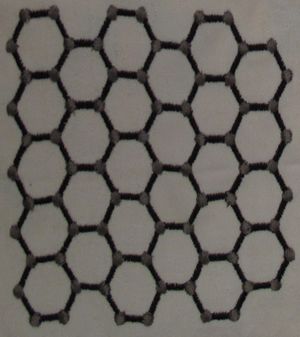
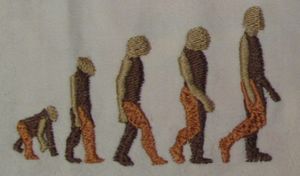
In particular, younger students could create embroidery in (mostly) extra-curricalar classes that address societial isssues, like peace, envrionment, energy, migration etc. Creating wearable embroidery would engage learners in exposing views in public and not just the classroom.
Co-workers in an outfit that has such a machine could create identity-building designs.
Wenger defines identity as what we know, what is foreign and what we choose to know, as well as how we know it. Our identies determine with whom we will interact in a knowledge sharing activity, and our willingness and capacity to engage in boundary interactions (Wenger 2000, p.239). Billet (2006:66) adopts the stance that “the individual can be seen as being socially shaped ontogenetically, albeit in ways rendered unique by their personal histories of self-construction [..] relations between the individual and the social world might best be understood as those between ontogeny and history are understood, as operating in parallel and through negotiation, where the immediate and premediate coalesce and shape the postmediate experience. It is these relations that are continually engaged in remaking and reproducing cultural and social practice, as in vocational practice and learning.”
Part of identity building definitions imply that identity can, is and should being expressed.
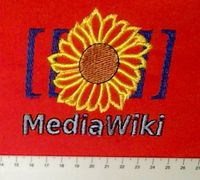
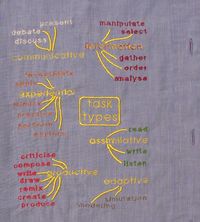
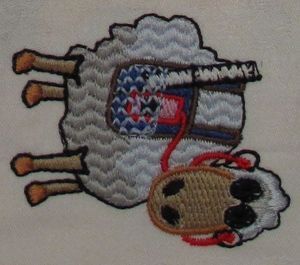
Embroidery for communication
Academics and others could create embroidery to wear at events like conferences and that express a strong viewpoint, part of a theory or research.
Such embroidery could:
- Display figures and diagrams, turn a person into some kind of walking poster
- Make strong statements
- Display logos of favorite projects, software etc.
1) Walking posters
Various matching technology and concepts does exit e.g. for business speed dating or as part of CSCL scripts in education.
Location-based matchmaking can be implemented with various specialized devices (i.e. some kind of bracelet), through cell phones or any other wireless device. Research and development in this is area is conducted under the label of location-based (or context-aware) mobile applications. The principle is the same: It should raise the awareness of the presence of others that share similar interests within a reduced spatial area, e.g. a conference building.
A first attempt was made, i.e. believe that I probably was one of the first trying to embroid a power point slide.
2) Making strong statements through cloth is of course and old tradition, but it mostly done through printing on T-shirts. Also, probably not that many people create their own personal statements.
3) Displaying logos is a similar idea. Why not having a pretty MediaWiki on a shirt pocket instead of a lame polo player or crocodile ? That is also something that has quite a tradition, mostly in comportate world, where T-shirts and other items are created in order to promote a new product line.
Embroidery design for learning vector graphics
Modern embroidery design often starts from "ordinary" vector graphics and between actual stitches, so-called embroidery objects are also represented as vector graphic objects.
We found that most of our students that enter our master's program in educational technology are not familiar with technical drawing, i.e. people feel lost in more complex programs such as Flash Professional or InkScape. Not being able to create or at least to manipulate technical drawings is a handicap that will make learning any multimedia, gaming designn or CAD/CAM program much more difficult. We feel that embroidery is nice way to start learning vector graphics since learners will produce tangible and (hopefully) movitating artifacts.
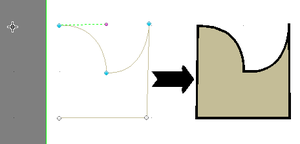
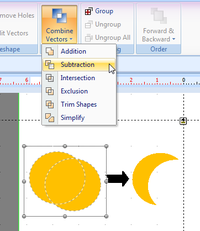
Embroidery could awaken interest for IT in people who otherwise just stick to Word and Facebook.
Embroidery as introduction to design
Having students create designs will train them in design and in using design software. Design is important for our societies and should be taught more.
Also, micro-fabrication based on sharable open-source and commercial designs will gain importance in the future and we should be ready for that.
We reproduce a quoted section from our Fab lab overview: {{quotation|Two future forces, one mostly social, one mostly technological, are intersecting to transform how goods, services, and experiences—the “stuff” of our world—will be designed, manufactured, and distributed over the next decade. An emerging do-it-yourself culture of “makers” is boldly voiding warranties to tweak, hack, and customize the products they buy. And what they can’t purchase, they build from scratch. Meanwhile, flexible manufacturing technologies on the horizon will change fabrication from massive and centralized to lightweight and ad hoc. These trends sit atop a platform of grassroots economics—new market structures developing online that embody a shift from stores and sales to communities and connections. (Future of Making Map, retrieved 23 June 2009)
Embroidery as motivator and post-production
Subject-specific designs could be motivators in project-oriented classes (nature, science, political). I.e. the idea is to have students create designs that represent knowledge in various forms.
Currently, in such mostly extra-curricilar activities, learners will produce posters, sometimes pictures or clips, rarely exhibitions. I.e. artifacts that very likely will go away and that will not remain in the possession of the createor. Embroidery can create souvenirs of an activity that may last.
Embroidery as contructionist learning object
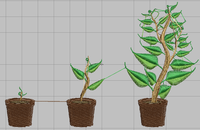
According to Zuckerman's taxonomy there are three kinds of constructionist learning objects
- Construction & Design (Froebel tradition) and its modern digital variants (Papert and Resnick)
- Conceptual Manipulation (Montessori)
- Reality Role Play (Dewey)
1 ) See embroidery for learning design and 2D drawing (above)
2) ?
3) Embroidered cloth or bands could help to organize role plays
Links
- Matchmaking
- A new and revolutionary social interaction device, Dating Industry and Matchmaking Industry Forums Forum Index -> New Technologies
Bibliography
- Billett, S. (2006) Relational Interdependence Between Social and Individual Agency in Work and Working Life, Mind, Culture, And Activity, 13(1), 53-69. PDF
- Dewey, J. (1938) Experience and Education, New York: Collier Books.
- Fröbel, F. (1826) On the Education of Man (Die Menschenerziehung), Keilhau/Leipzig: Wienbrach
- Montessori, M. (1916) The Montessori Method, New York: Schocken Books (1964 edition)
- Resnick, M., Martin, F., Sargent, R., and Silverman, B. (1996). Programmable Bricks: Toys to Think With. IBM Systems Journal 35, 3, 443-452.
- Wenger, Etienne. (2000), Communities of Practice and Social Learning Systems, Organization, Volume 7(2): 225-246
- Zuckerman, Oren (2006, in preparation), Historical Overview and Classification of Traditional and Digital Learning Objects MIT Media Laboratory, 20 Ames Street, Cambridge, MA 02139. PDF - CiteSeer Abstract.
- Zuckerman, Oren (2010). Designing digital objects for learning: lessons from Froebel and Montessori, International Journal of Arts and Technology 3 (1) 124-135. (Access restricted).
- To sort out